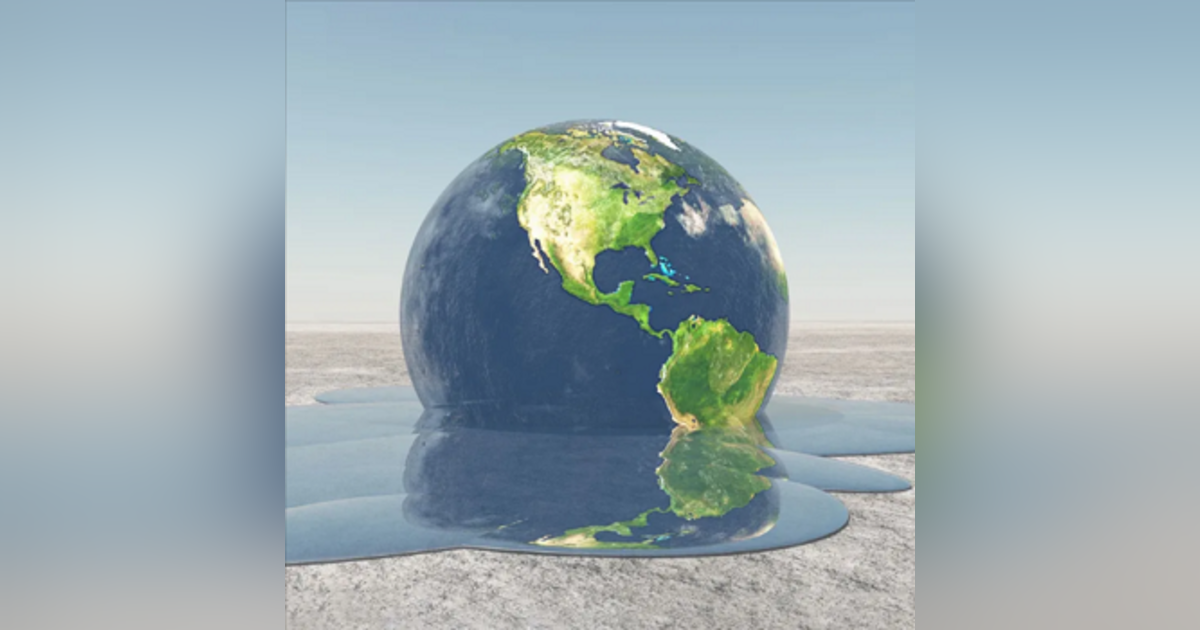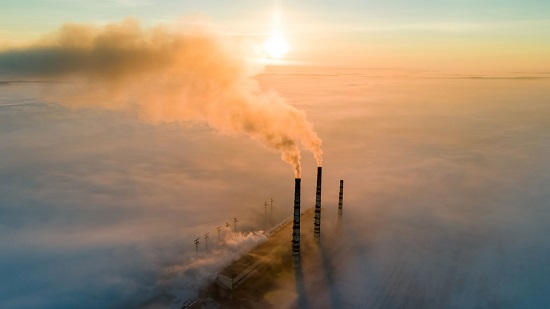It’s The Little Things: How to Become 1.5°C, A Degree of Concern

We have seen approximately a 1.0°C increase in global average temperatures since pre-industrial times. This is damaging the planet’s ecosystems in ways that are harmful to biodiversity; and dangerous to people.
supporting links
1. The Paris Agreement [United Nations Climate Change]
2. Paris Agreement [Wikipedia]
3. The Paris Agreement: Is The World’s Climate Action Plan on Track? [Visual
Capitalist]
4. Why 2 degrees of global warming will be way worse than 1.5 [VOX]
5. We’re Facing a Climate and Biodiversity Crisis…But Nature Can Help Solve It
[WWF]
6. Explained: The 1.5 C climate benchmark [Climate Portal]
Contact That's Life, I Swear
- Tweet us at @RedPhantom
- Listen to audios:
-Apple https://apple.co/3MAFxhb
-Google https://bit.ly/3L2K4Iu
-Spotify https://spoti.fi/3xCzww4
-My Website: https://bit.ly/39CE9MB - Email us at https://www.thatslifeiswear.com/contact/
- Music and/or Sound Effects are courtesy of Pixabay
- If you like to leave a review for an episode, please submit on Apple Podcast or on my website
- Do you have topics of interest you'd like to hear for future podcasts? If so please email us at: https://www.thatslifeiswear.com/contact/
Thank you for following the That's Life I Swear podcast!!
6 min read
Today we probe into a pressing issue shaping our planet's future. The issue is very tiny, it’s called a degree. At this very moment in time, we're standing on the precipice of a critical milestone: 1.5 degrees Celsius. Recent temperature rises have brought us to the uncomfortable questions about the trajectory of our climate goals. But with all the warnings, there's a glimmer of hope…a glimmer. This hope provides a chance to recalibrate, to rethink, and to act. Join me as we explore whether we've crossed a dangerous warming threshold, and what it means for the fate of our world. The clock is ticking. Let's begin.
Welcome to That's Life, I Swear. This podcast is about life's happenings in this world that conjure up such words as intriguing, frightening, life-changing, inspiring, and more. I'm Rick Barron your host.
Now and then I find interesting information, a story or an intriguing fact, while researching my next topic. While not a big story per se, it comes down to what I call, ‘it’s the little things that matter’. From time to time, I’ll share these short segments with you and hope you’ll learn something from the episode, even if it’s a small little thing.
That said, here's the rest of this story
Cartoon on temperature change. Courtesy of: Yale Climate Connections
Recent temperature surges are uncomfortably approaching a harsh tipping point: 1.5 degrees Celsius. A grim signal for global climate goals, yet it's not the end game—not just yet.
The alarm bells ring louder as our planet experienced its hottest January/2024 on record. The European Union climate monitor revealed data that presents a stark picture. Over the past 12 months, the global average temperature has soared more than 1.5 degrees Celsius, or 2.7 degrees Fahrenheit, above the preindustrial age benchmark.
This number holds special weight in the international mission to combat climate change. The 2015 Paris Agreement set the target of limiting global warming to 1.5 degrees Celsius or, at the very least, ensuring it stays comfortably below 2 degrees Celsius.
Interpreting the latest temperature data doesn't confirm that we've breached the lower limit just yet. However, it serves as a powerful symbolic reminder that, unless we witness substantial shifts in climate or the global economy, we are inevitably steering towards that threshold in the years to come. The question persists: have we crossed a dangerous warming threshold?
What do the 1.5 and 2 degree targets signify?
They aren't fixed benchmarks inscribed in the laws of nature; rather, they symbolize the thresholds of warming that would trigger consequences too severe for societies to effectively manage. These standards were established and unanimously agreed upon by nearly 200 nations under the Paris accord.
Think deadlier heatwaves, rising sea levels, heightened biodiversity loss, prolonged droughts, and more intense storms. Scientists concur that if warming persists beyond recent levels, these impacts will exacerbate significantly. The temperature targets serve as guardrails, essential for safeguarding our communities, ecosystems, and landscapes.
However, the stark reality is that many of these physical repercussions of warming are already escalating. With each passing day, we continue to pump heat-trapping gases into the atmosphere through BFF, which is not ‘best friends forever’, but the burning of fossil fuels. This underscores why scientists and diplomats emphasize the importance of mitigating temperature rise. Even if we breach the 1.5-degree mark someday, it remains imperative to strive to keep temperatures from climbing beyond 1.6, 1.7, or 1.8 degrees.
What implications arise from surpassing these thresholds?
The essence of the Paris goals lies in their long-term perspective. Therefore, definitively determining their breach requires the passage of a significant span of time—potentially even a decade. Researchers caution against premature declarations of failure simply because temperatures momentarily exceed 1.5 degrees Celsius for a day, a month, or even a year.
Numerous variables come into play—El Niño and La Niña phenomena, volcanic eruptions, outbreaks, and pandemics, not to mention the element of sheer chance—all contribute to the year-to-year fluctuations in the planet's precise temperatures. However, these factors are not the essence of the Paris goals.
Moreover, various climate monitoring agencies offer slightly divergent estimates of the Earth's temperature at any given moment. These disparities stem from differences in how they compile and analyze the vast troves of meteorological data gathered by satellites, sensors, and weather balloons. Consequently, the timeframe for potentially crossing these thresholds might vary depending on who is conducting the measurements.
For example, the European Union's Copernicus Climate Change Service indicates that 2023 witnessed a temperature increase of 1.48 degrees Celsius above the preindustrial baseline. Conversely, according to Berkeley Earth, a research institution in California, the increase was measured at 1.54 degrees Celsius.
How imminent is the possibility of surpassing them?
Over the span of recent years, human activity has driven warming to approximately 1.2 or 1.3 degrees Celsius since the onset of the Industrial Revolution, according to most assessments. At the current rate of carbon emissions, it's only a matter of a few more years before we fundamentally alter the chemistry of the atmosphere to a degree where even radical reductions in emissions wouldn't suffice to prevent warming from ultimately surpassing 1.5 degrees.
Smokestacks adding to the heat of the earth. Courtesy of: Yale Climate Connections
Yes, a degree here a degree there, it’s all comes down to the little things that count.
The inaugural official assessment of nations' advancement toward fulfilling the Paris objectives, released last year, painted a bleak picture. According to the report, the climate commitments currently in place would set the world on a trajectory towards around 2.5 degrees Celsius of warming by 2100. This projection assumes that countries adhere to their declared strategies for emissions reduction—a task that continues to pose challenges more than eight years post the signing of the Paris Agreement.
2024 Begins with More Record Heat Worldwide
On the heels of Earth’s warmest year, January of 2024, was the eighth month in a row in which global temperatures blew past previous records.
It was the hottest January on record for the oceans, too, according to the European Union’s Copernicus Climate Change Service. Sea surface temperatures were just slightly lower than in August 2023, the oceans’ warmest month on the books. And sea temperatures kept on climbing in the first few days of February of 2024, surpassing the daily records set last August.
The oceans serve as a critical reservoir for absorbing the majority of the additional heat retained by greenhouse gases in the atmosphere, offering a reliable indicator of the extent and pace of global warming. Elevated ocean temperatures not only intensify hurricanes and atmospheric river storms but also disrupt marine ecosystems.
Atmospheric River storm. Courtesy of: Los Angeles Times
January marks the eighth consecutive month where average air temperatures, spanning continents and seas alike, have exceeded previous records for that time of year. In sum, 2023 stands as Earth's hottest year in over 150 years.
Scientists attribute this unprecedented warmth primarily to human activities such as the burning of fossil fuels and deforestation, which have steadily elevated temperatures for more than a century. Additionally, the current El Niño weather pattern is facilitating the release of more ocean heat into the atmosphere, exacerbating the warming trend.
However, the exact reasons behind Earth's prolonged and intense heat in recent months remain a subject of debate among researchers. Many await further data to determine if additional, less predictable factors may also be influencing the situation.
Samantha Burgess, Copernicus's deputy director, emphasized the urgent need for swift reductions in greenhouse gas emissions to curb the rise in global temperatures.
Copernicus's data highlights that January saw temperatures significantly exceeding average levels in regions such as eastern Canada, northwestern Africa, the Middle East, and Central Asia. Conversely, much of the inland United States experienced colder-than-usual conditions. Furthermore, parts of South America experienced warmer temperatures coupled with dry conditions, exacerbating recent forest fires that ravaged central Chile.
In response to recent instances of intense underwater heat waves, the National Oceanic and Atmospheric Administration (NOAA) took action in December of 2023 by introducing three new levels to its ocean heat alert system, aimed at identifying areas where corals may be at risk of bleaching or mortality.
The current El Niño pattern observed in the Pacific typically correlates with warmer global temperatures and a range of impacts on regional rainfall and temperatures.
However, the changing dynamics of Earth's climate make the effects of El Niño less predictable than before, according to Michelle L'Heureux, a NOAA scientist specializing in El Niño and its counterpart, La Niña. She noted that as human-induced global warming accelerates, traditional expectations regarding El Niño's influence on local temperatures are becoming increasingly unreliable. Previously cooler regions during El Niño events now tend to experience near-average or even above-average temperatures.
What can we learn from this story? What's the takeaway?
How significant is a mere degree of difference? What implications does a 2-degree variance hold compared to 1.5 degrees?
With each passing moment, we etch deeper the scars of human suffering and irreversible harm onto our shared future. There's no evasion, no refuge from the urgent need to decarbonize. It's an imperative for ensuring the enduring presence of our species on this planet.
Seems like the smart thing would be is to get on with it. Now!
Well, there you go, my friends; that's life, I swear
For further information regarding the material covered in this episode, I invite you to visit my website, which you can find on Apple Podcasts, for show notes calling out key pieces of content mentioned and the episode transcript.
As always, I thank you for the privilege of you listening and your interest.
Be sure to subscribe here or wherever you get your podcast so you don't miss an episode. See you soon.













